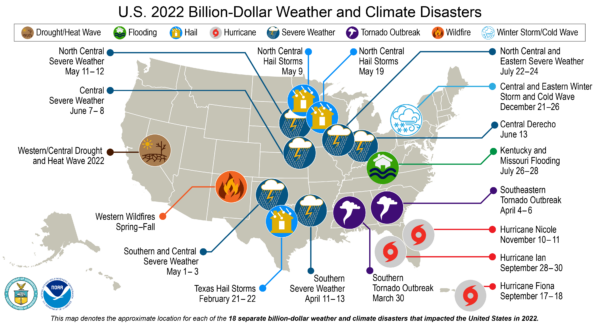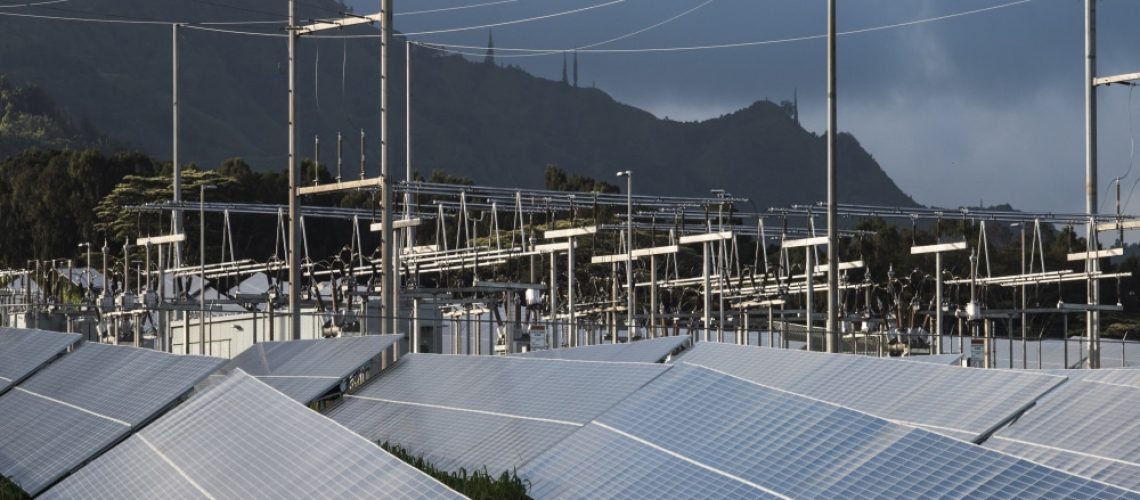In 2022, supply capacity constraints, rising costs, and severe weather events increasingly put the energy grid at risk. In 2023, local solar and storage offer a solution.
The United States electricity grid is increasingly being pushed to the brink. Rising electricity costs and demands create risks for millions of Americans.
At the same time, power outages from severe weather are leaving millions in the dark. These grid events are costly for U.S. ratepayers. A recent white paper from Vote Solar and Solar United Neighbors looks back at these issues to understand how local solar plus batteries can be leveraged to address the issue.
More than 141.5 U.S. residents across 40 states were impacted by capacity constraints, said the report. These constraints resulted in further increased energy costs and even blackouts.
All of the Regional Transmission Operators (RTOs) issued warnings anticipating further grid capacity shortages for 2022 and beyond. Severe weather events have only further compounded these issues. In 2022, there were 18 weather or climate-related disasters with losses of over $1 billion each to affect the United States, according to the National Oceanic and Atmospheric Administration.

Among these was Winter Storm Elliot in Dec. 2022 which swept across the bulk of the United States at the peak of the holiday season. As a result, more than 1.2 million customers across North and South Carolina lost power during rolling blackouts due to insufficient supply to meet rising cold weather demand. The Midwest regional grid operator report found almost 50 GW of generating capacity had been forced offline each day, 22 GW being natural gas and 14 GW being coal generation.
These outages do not affect everyone equally. The most vulnerable members of society often have fewer resources for dealing with outages, while also being disproportionately harmed by the outages. For example, the white paper notes racial and income disparities in electricity reliability in Minnesota. Communities of color and predominantly low-wealth in Northside and Southside Green Zones in Minneapolis, Minnesota had between 59% to 85% higher incidence of long-duration outages compared to Xcel customers within the same county, and 32% to 35% increased incidence across Xcel’s overall service territory.
In 2023, more issues are coming. Colorado utilities are already discussing concerns about meeting summer demands in 2023. Southwest Power Pool (SPP) and ISO New England (ISO-NE) are issuing warnings about winter-peaking electricity demands and the need to reduce electricity usage after repeated issues over the past two years. State regulators in Iowa are asking utilities how they plan to manage the grid reliably amidst these warning signs.
In Texas, researchers found that ERCOT had been significantly underestimating the needed capacity to meet peak demand by ignoring the effects of climate change and possible weather variability outside historical ranges. This resulted in hourly peak demand 22% above ERCOT’s most extreme forecast during Winter Storm Uri in 2021.
Distributed energy resources (DERs), like local rooftop or community solar paired with battery storage, offer a proven solution for energy resiliency, and cost management.
For example, California ISO issued warnings to conserve power from Sept. 1 until Sept. 8 during a heat wave. The grid narrowly avoided blackouts. This success was enabled by the more than 80,000 distributed batteries connected to the California grid which can provide over 900 MW of capacity. About 76% of these batteries were set to discharge during the peak hours of 4 pm to 9 pm. This was enabled in part by programs like the Demand Side Grid Support Program from Pacific Gas & Electric, Southern CA Edison, and San Diego Gas & Electric which provides additional compensation to customers for dispatching during certain events.
The California Solar and Storage Association estimated that California utilities spent an extra $450 million purchasing electricity on the spot market compared to a “normal” hot day. Similar investments into local solar and storage would yield benefits over a decade, instead of a single day.
All involved stakeholders, from policymakers down to the individual residential consumer, should recognize the benefits offered by these DERs. The potential is enormous for new pathways and programs to leverage these resources into aggregated DERs tailored to meet pervasive grid needs in their local and regional context.






